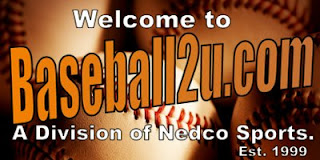
Executing A Delay Steal Properly
By Jim Bain
The Delay Steal is not usually a type of steal you can utilize successfully against a well coached team. However, even the best teams are subject to mental lapses and that's when you capitalize on it.
What is a delayed steal? Perhaps a better name for this type of steal would have been surprise steal.
It's a steal which occurs in an unusual fashion and time. Great! What does that mean?
Let's assume the opposing team's 300 lb. catcher has just drawn a walk. Would you seriously consider him a base stealing threat? Of course not. But, what if that 300 lb runner, who absolutely nobody paid any attention, suddenly took off for second base. There would be a moment of hesitation, disbelief, of what was happening. This moment may be all he needs to steal the base.
That's why a delay steal can, at times, be very effective.
A delay steal is usually attempted with only a runner on first, but does not exclude other runner being on base, especially third base.
The base runner Must be very observant of the other team's actions in between pitches. This means watching them the entire game, not just when you're on base.
Remember I said delay stealing is hard to do against a well coached team? It's because the players are always aware of what's happening on the field of play. The shortstop will take a couple of steps toward the pitcher to protect from an over throw from the catcher.
The second baseman will glance at the base runner, while the catcher and first baseman watch the runner out of the corner of their eye. All eyes are upon the base runner, there's no chance for a successful delay steal.
However, let's take a look at another scenario.
The pitcher is struggling to find the strike zone. The catcher, as they will do a lot, will fire the ball back to the pitcher, as if wanting to wake him up and correct his wildness.
The second baseman and shortstop turn their backs to the pitcher and return to their normal fielding position after moving forward with the pitch.
Everyone is either pre-occupied, frustrated or otherwise not paying attention. This is when you strike.
Confident the infielders will not change their in between pitch routine, you decide to steal. Take your normal lead off, then secondary lead off. This time instead of scurrying back to first base after the pitch, you stay at your secondary lead position.
***You must be an actor at this point. Do nothing, jerk or move towards second base, which would draw the catcher's attention.***
As the catcher releases the ball, make sure he's throwing back to the pitcher, you take off for second base. You already have a good secondary lead, your cross step has you directly in line with second base and at full speed.
The entire infield must immediately wake up and move when they realize you're stealing. 99% of the time, if you've analyzed the situation correctly, there won't even be a throw to second.
The pitcher will not be in a good throwing position when he receives the ball. The shortstop and second baseman will be out of position and unable to cover the base for a throw ahead of you. Unless you trip and fall, you have just stolen second base.
Sounds easy...it's not, but there's definitely a time and a situation which will call for using a delay steal.
Jim Bain - Former Minor league baseball player, who since retiring has dedicated his life to teaching baseball to youth. Visit his exciting info packed website: http://www.Learn-Youth-Baseball-Coaching.com
Article Source: http://EzineArticles.com/?expert=Jim_Bain
Article Source: http://EzineArticles.com/6116592
======================
Recoomended Baseball Websites:
**********************************
CoachesBest.com
HurricaneTrainer.com
BatAction.com
HandsBackHitter.com
QuickSwingTrainer.com
AdvancedSkillsTee.com
BattingCagesDirect.com
BattingCagesrUs.com




